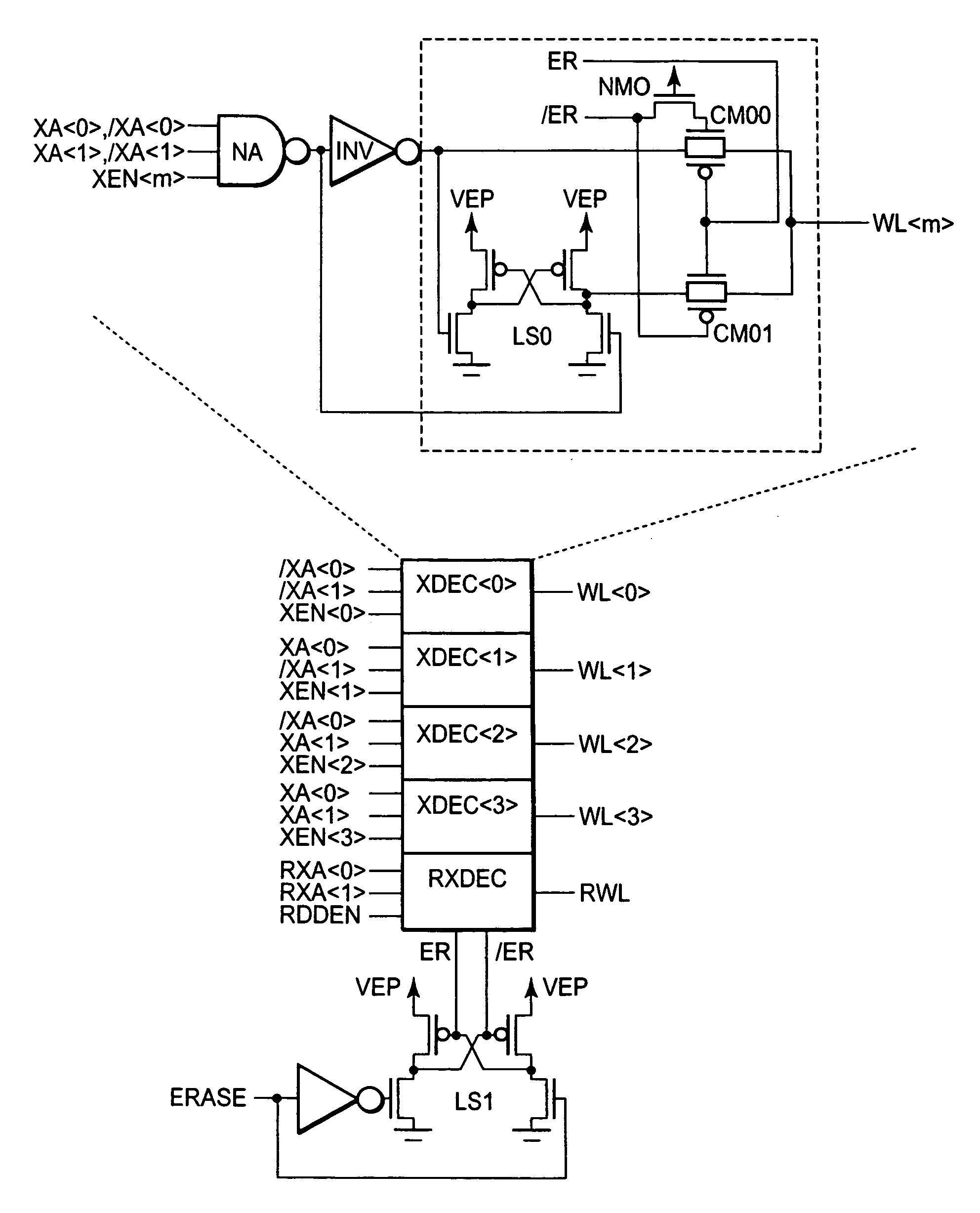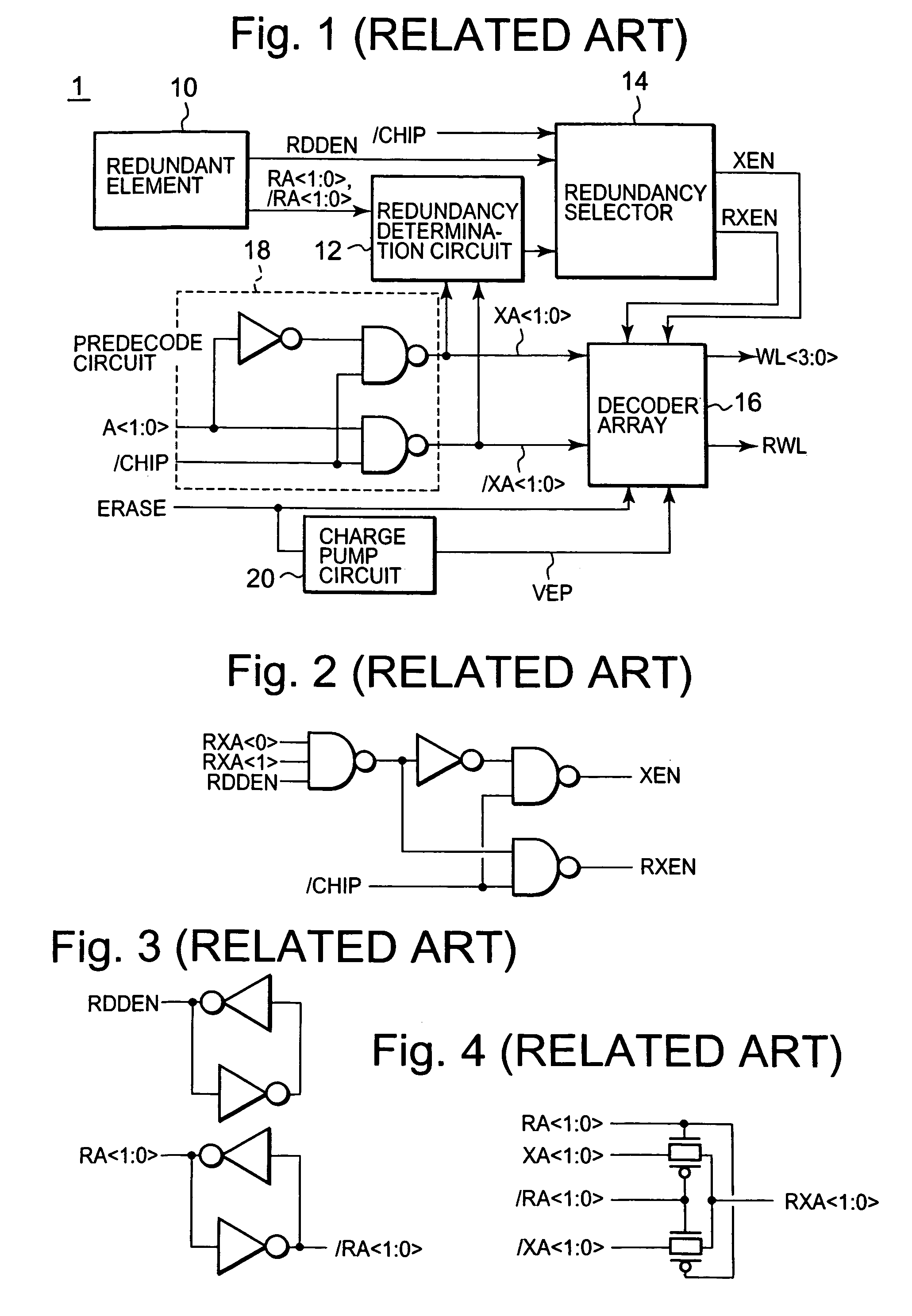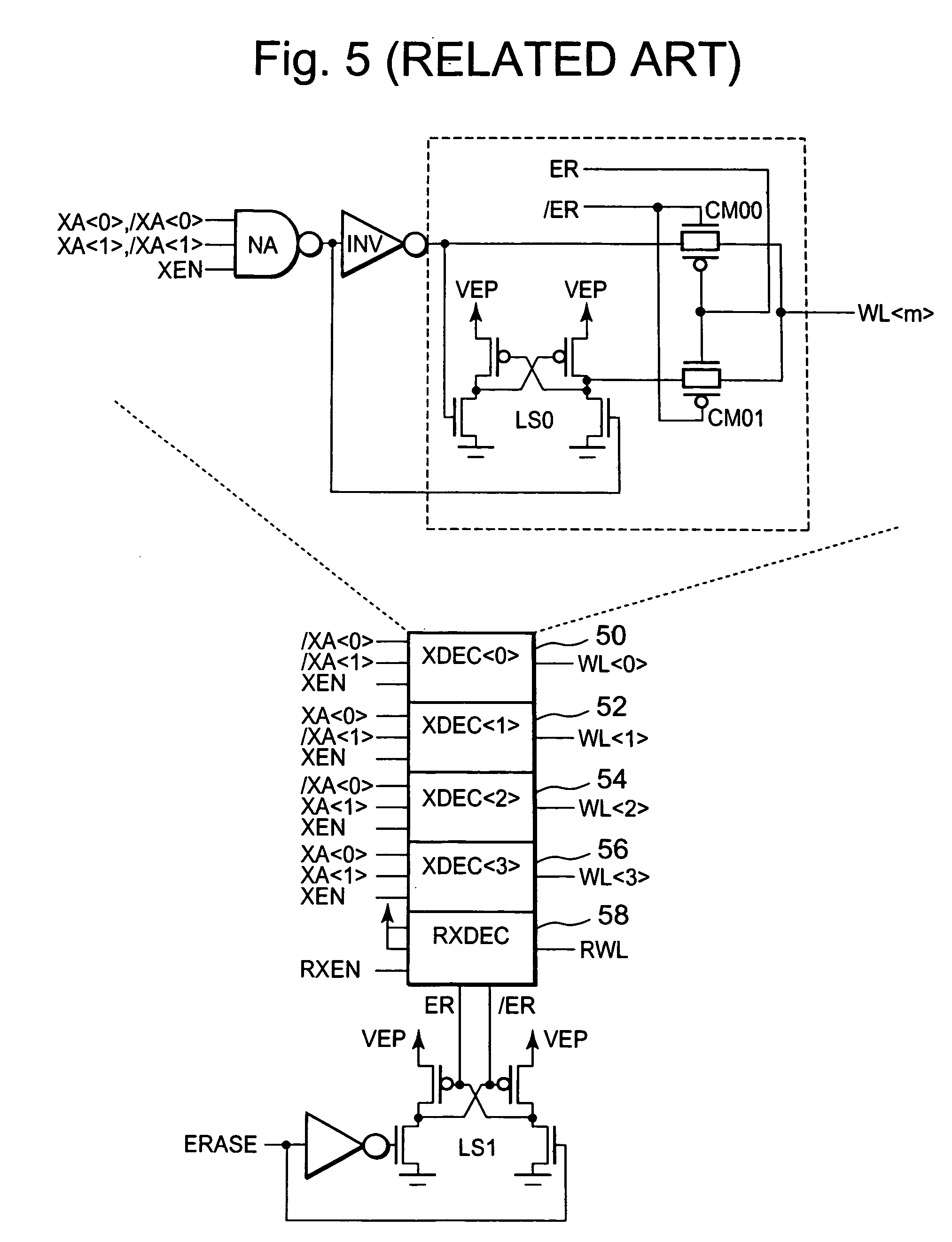Nonvolatile semiconductor memory device
a non-volatile, semiconductor technology, applied in static storage, digital storage, instruments, etc., can solve the problems of reducing the drive capacity of the mos transistor, incurring a delay in the operation of the control gate electrode, and reducing the drive capacity of each transistor, so as to reduce the layout area and make the reading speed faster
- Summary
- Abstract
- Description
- Claims
- Application Information
AI Technical Summary
Benefits of technology
Problems solved by technology
Method used
Image
Examples
Embodiment Construction
[0062]Preferred embodiments of the present invention will be explained hereinafter in detail with reference to the accompanying drawings.
[0063]FIG. 6 is a block diagram showing a configuration of a control gate electrode (WL) type decode circuit of the present invention. FIGS. 7 and 8 are respectively configurational diagrams of respective circuits employed in the present decode circuit. A redundant element and a redundancy determination circuit are similar to the conventional circuits.
[0064]The present decode circuit 60 comprises a predecode circuit 68 which inputs address signals A and a control signal / CHIP, a redundant element 10 which holds and outputs a redundancy replacement flag (RDDEN) and a redundant relief address (RA) set to a power supply level (VCC) where redundancy replacement is required, a redundancy determination circuit 12 which inputs the outputs (RA, / RA) of the redundant element and the outputs (XA, / XA) of the predecode circuit 68, a redundancy selector array ...
PUM
 Login to View More
Login to View More Abstract
Description
Claims
Application Information
 Login to View More
Login to View More - R&D
- Intellectual Property
- Life Sciences
- Materials
- Tech Scout
- Unparalleled Data Quality
- Higher Quality Content
- 60% Fewer Hallucinations
Browse by: Latest US Patents, China's latest patents, Technical Efficacy Thesaurus, Application Domain, Technology Topic, Popular Technical Reports.
© 2025 PatSnap. All rights reserved.Legal|Privacy policy|Modern Slavery Act Transparency Statement|Sitemap|About US| Contact US: help@patsnap.com



